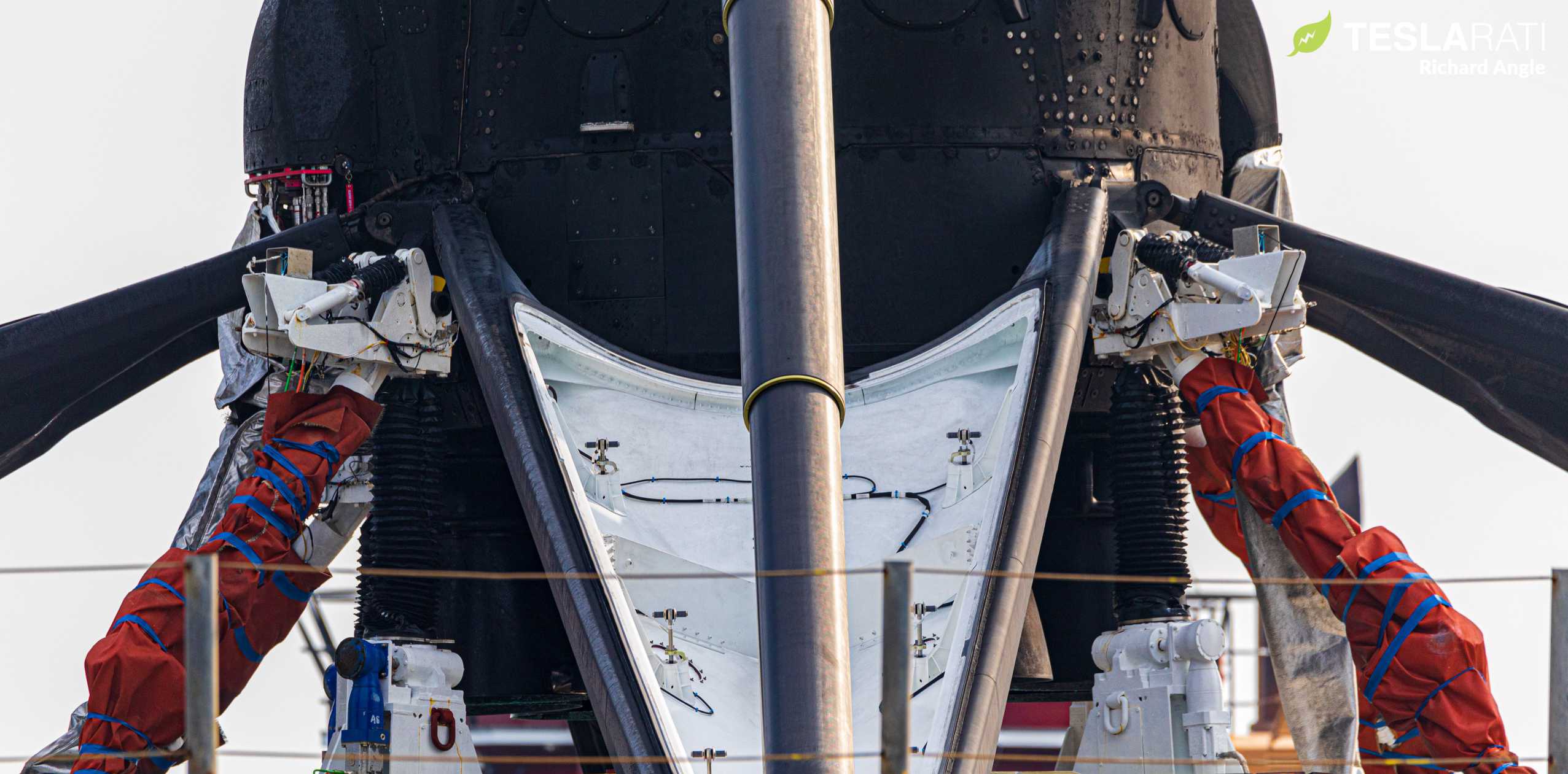

News
SpaceX retracts latest rocket’s landing legs in impressive feat of durability
A SpaceX Falcon 9 booster had all four of its landing legs successfully retracted after a flawless fourth launch and landing, highlighting the impressive margins and durability of the rocket’s upgraded Block 5 design.
On April 22nd, Falcon 9 booster B1051 lifted off on its fourth orbital-class mission – also its second 60-satellite Starlink launch this. Around eight minutes later, B1051 successfully landed aboard drone ship Of Course I Still Love You (OCISLY), ending a back-to-back streak of failed ocean recoveries for SpaceX and verifying that the cause of a March 2020 in-flight engine failure had been rectified. After the loss of booster B1056 and B1048 in February and March, it was also simply a relief to have B1051 safe and sound aboard OCISLY, ensuring that the rocket should be able to support another launch in the near future.
After sailing in port on April 26th, SpaceX technicians lifted a booster off of drone ship OCISLY’s deck for the first time since late January – coincidentally (or maybe not) also Falcon 9 B1051. Two days after its arrival in port and transfer onto dry land, SpaceX successfully retracted all of the massive booster’s landing legs in less than three hours and had it ready for transport less than two hours after that. While B1051’s brisk fourth recovery didn’t break any records, it still serves as a reminder of Falcon 9’s impressive durability in light of the landing it experienced just ~85 days prior.
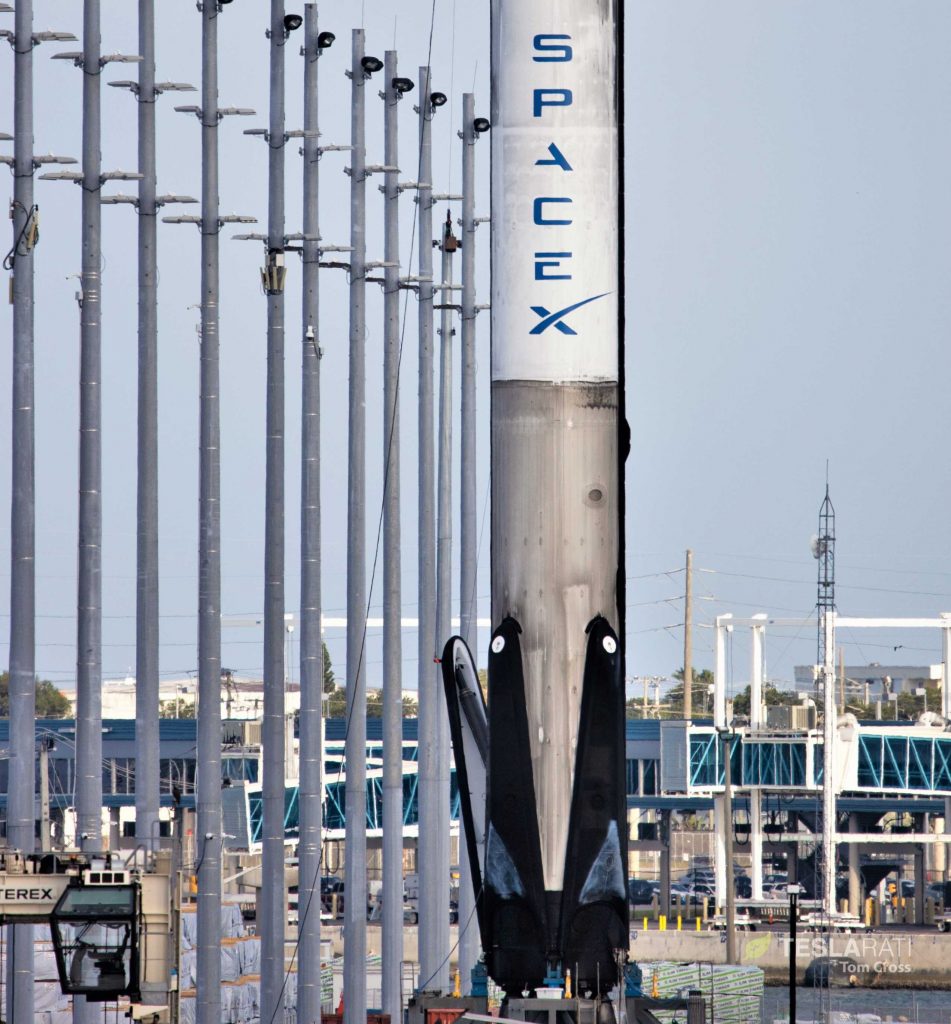
B1051’s successful leg retraction after its fourth launch and landing is particularly impressive for one main reason: after its third launch, the booster suffered perhaps the hardest drone ship landing any Block 5 rocket has thus far experienced.
Taken in March 2019 and February 2020 after Falcon 9 B1051’s first and third launches and landings, the photo below reveals just how hard a landing B1051 experienced after its Starlink-4 launch. Built almost entirely out of carbon fiber composites and mounted directly to the rocket’s tank walls, Falcon’s telescoping landing legs rely on something known as a ‘crush core’ – made out of aluminum honeycomb – that’s designed to intentionally collapse under a very specific amount of stress.
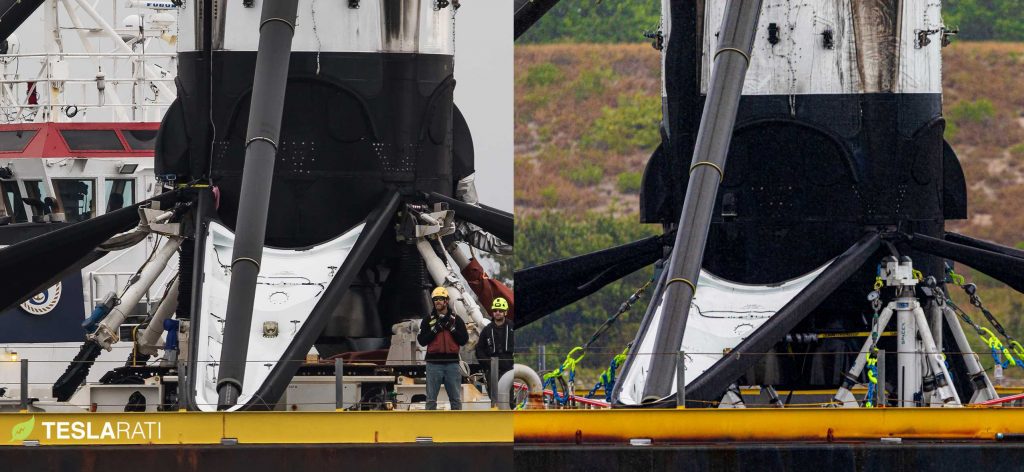
The crush core is situated in the very tip of the cylindrical leg booms and is easily visible above on the left, while it has nearly disappeared in the right (after) photo after an exceptionally hard landing used up what looks like 90+% of the booster’s safety margin. In other words, if B1051 had landed just a little harder after its third launch, it’s possible that the booster’s landing leg booms would have used up all their crush cores and been driven into the kerosene tank they attach to, potentially totaling the Falcon 9 first stage.
Instead, while clearly a rough landing, B1051 appears to have had its landing leg crush cores replaced and was made ready for another Starlink launch less than three months after that exceptionally hard landing. In other words, despite the rarity of similar hard landings over dozens of recent booster landings, SpaceX was apparently almost entirely unconcerned about the rocket’s state.
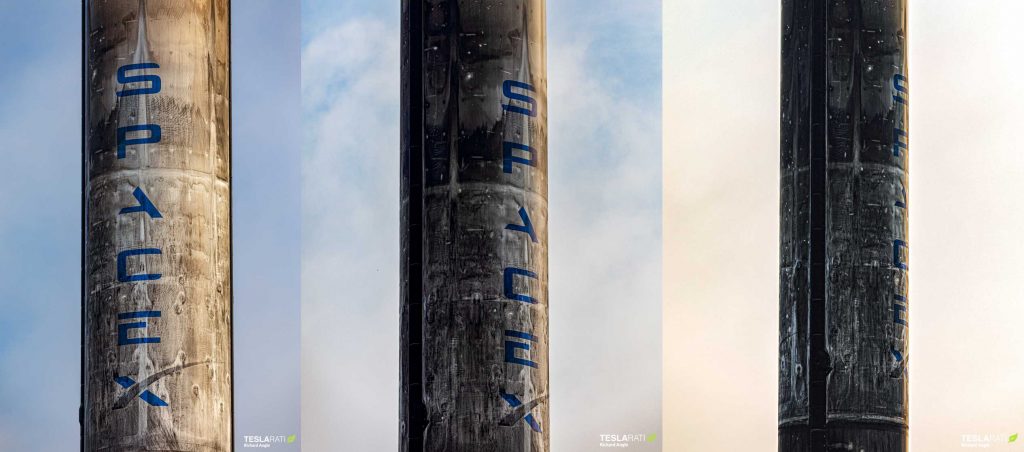
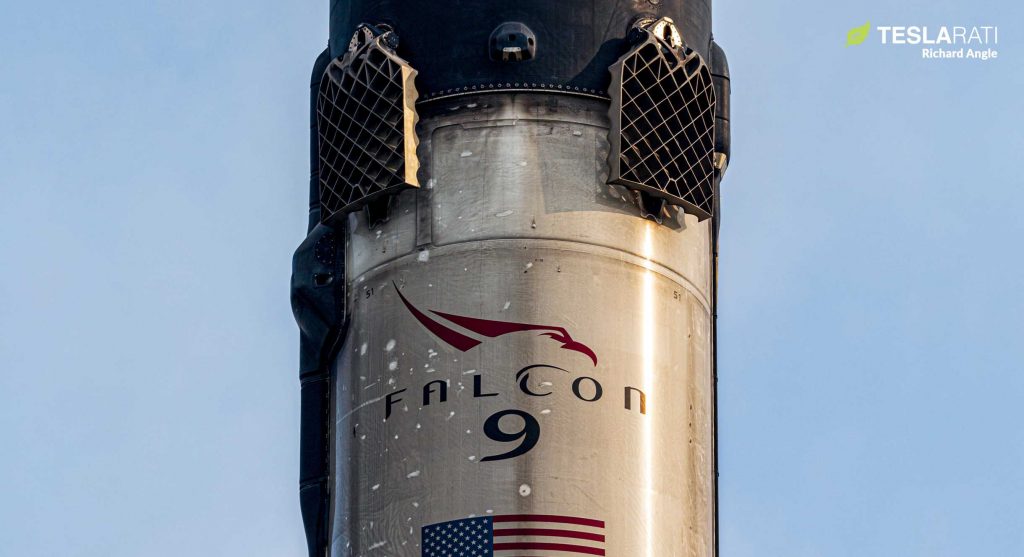
As usual, the company almost certainly checked the structural integrity of B1051’s major welds and landing leg hardware before certifying the vehicle for its fourth launch, but the fact that its reuse was so seemingly unexceptional is a testament to the sheer durability of SpaceX’s reusable rocket boosters. Thanks to the modularity of its design, B1051 should have no trouble performing at least several more orbital-class launches over the next several months (if not years). More likely than not, the Falcon 9 Block 5 rocket will fly again just two or so months from now on another Starlink mission, of which SpaceX has 20+ nominally scheduled this year alone.
News
Tesla UK sales see 14% year-over-year rebound in June: SMMT data
The SMMT stated that Tesla sales grew 14% year-over-year to 7,719 units in June 2025.

Tesla’s sales in the United Kingdom rose in June, climbing 14% year-over-year to 7,719 units, as per data from the Society of Motor Manufacturers and Traders (SMMT). The spike in the company’s sales coincided with the first deliveries of the updated Model Y last month.
Model Y deliveries support Tesla’s UK recovery
Tesla’s June performance marked one of its strongest months in the UK so far this year, with new Model Y deliveries contributing significantly to the company’s momentum.
While the SMMT listed Tesla with 7,719 deliveries in June, independent data from New AutoMotive suggested that the electric vehicle maker registered 7,891 units during the month instead. However, year-to-date figures for Tesla remain 2% down compared to 2024, as per a report from Reuters.
While Tesla made a strong showing in June, rivals are also growing. Chinese automaker BYD saw UK sales rise nearly fourfold to 2,498 units, while Ford posted the highest EV growth among major automakers, with a more than fourfold increase in the first half of 2025.
Overall, the UK’s battery electric vehicle (BEV) demand surged 39% to to 47,354 units last month, helping push total new car sales in the UK to 191,316 units, up 6.7% from the same period in 2024.
EV adoption accelerates, but concerns linger
June marked the best month for UK car sales since 2019, though the SMMT cautioned that growth in the electric vehicle sector remains heavily dependent on discounting and support programs. Still, one in four new vehicle buyers in June chose a battery electric vehicle.
SMMT Chief Executive Mike Hawes noted that despite strong BEV demand, sales levels are still below regulatory targets. “Further growth in sales, and the sector will rely on increased and improved charging facilities to boost mainstream electric vehicle adoption,” Hawes stated.
Also taking effect this week was a new US-UK trade deal, which lowers tariffs on UK car exports to the United States from 27.5% to 10%. The agreement could benefit UK-based EV producers aiming to expand across the country.
News
Tesla Model 3 ranks as the safest new car in Europe for 2025, per Euro NCAP tests
Despite being on the market longer than many of its rivals, the Tesla Model 3 continues to set the bar for vehicle safety.

The Tesla Model 3 has been named the safest new car on sale in 2025, according to the latest results from the Euro NCAP. Among 20 newly tested vehicles, the Model 3 emerged at the top of the list, scoring an impressive 359 out of 400 possible points across all major safety categories.
Tesla Model 3’s safety systems
Despite being on the market longer than many of its rivals, the Tesla Model 3 continues to set the bar for vehicle safety. Under Euro NCAP’s stricter 2025 testing protocols, the electric sedan earned 90% for adult occupant protection, 93% for child occupant protection, 89% for pedestrian protection, and 87% for its Safety Assist systems.
The updated Model 3 received particular praise for its advanced driver assistance features, including Tesla’s autonomous emergency braking (AEB) system, which performed well across various test scenarios. Its Intelligent Speed Assistance and child presence detection system were cited as noteworthy features as well, as per a WhatCar report.
Other notable safety features include the Model 3’s pedestrian-friendly pop-up hood and robust crash protection for both front and side collisions. Euro NCAP also highlighted the Model 3’s ability to detect vulnerable road users during complex maneuvers, such as turning across oncoming traffic.
Euro NCAP’s Autopilot caution
While the Model 3’s safety scores were impressive across the board, Euro NCAP did raise concerns about driver expectations of Tesla’s Autopilot system. The organization warned that some owners may overestimate the system’s capabilities, potentially leading to misuse or inattention behind the wheel. Even so, the Model 3 remained the highest-scoring vehicle tested under Euro NCAP’s updated criteria this year.
The Euro NCAP’s concerns are also quite interesting because Tesla’s Full Self-Driving (FSD) Supervised, which is arguably the company’s most robust safety suite, is not allowed for public rollout in Europe yet. FSD Supervised would allow the Model 3 to navigate inner city streets with only minimal human supervision.
Other top scorers included the Volkswagen ID.7, Polestar 3, and Geely EX5, but none matched the Model 3’s total score or consistency across categories. A total of 14 out of 20 newly tested cars earned five stars, while several models, including the Kia EV3, MG ZS, and Renault 5, fell short of the top rating.
Elon Musk
Why Tesla’s Q3 could be one of its biggest quarters in history
Tesla could stand to benefit from the removal of the $7,500 EV tax credit at the end of Q3.

Tesla has gotten off to a slow start in 2025, as the first half of the year has not been one to remember from a delivery perspective.
However, Q3 could end up being one of the best the company has had in history, with the United States potentially being a major contributor to what might reverse a slow start to the year.
Earlier today, the United States’ House of Representatives officially passed President Trump’s “Big Beautiful Bill,” after it made its way through the Senate earlier this week. The bill will head to President Trump, as he looks to sign it before his July 4 deadline.
The Bill will effectively bring closure to the $7,500 EV tax credit, which will end on September 30, 2025. This means, over the next three months in the United States, those who are looking to buy an EV will have their last chance to take advantage of the credit. EVs will then be, for most people, $7,500 more expensive, in essence.
The tax credit is available to any single filer who makes under $150,000 per year, $225,000 a year to a head of household, and $300,000 to couples filing jointly.
Ending the tax credit was expected with the Trump administration, as his policies have leaned significantly toward reliance on fossil fuels, ending what he calls an “EV mandate.” He has used this phrase several times in disagreements with Tesla CEO Elon Musk.
Nevertheless, those who have been on the fence about buying a Tesla, or any EV, for that matter, will have some decisions to make in the next three months. While all companies will stand to benefit from this time crunch, Tesla could be the true winner because of its sheer volume.
If things are done correctly, meaning if Tesla can also offer incentives like 0% APR, special pricing on leasing or financing, or other advantages (like free Red, White, and Blue for a short period of time in celebration of Independence Day), it could see some real volume in sales this quarter.
You can now buy a Tesla in Red, White, and Blue for free until July 14 https://t.co/iAwhaRFOH0
— TESLARATI (@Teslarati) July 3, 2025
Tesla is just a shade under 721,000 deliveries for the year, so it’s on pace for roughly 1.4 million for 2025. This would be a decrease from the 1.8 million cars it delivered in each of the last two years. Traditionally, the second half of the year has produced Tesla’s strongest quarters. Its top three quarters in terms of deliveries are Q4 2024 with 495,570 vehicles, Q4 2023 with 484,507 vehicles, and Q3 2024 with 462,890 vehicles.
-

 Elon Musk4 days ago
Elon Musk4 days agoTesla investors will be shocked by Jim Cramer’s latest assessment
-

 News1 week ago
News1 week agoTesla Robotaxi’s biggest challenge seems to be this one thing
-

 Elon Musk2 weeks ago
Elon Musk2 weeks agoFirst Look at Tesla’s Robotaxi App: features, design, and more
-

 News2 weeks ago
News2 weeks agoSpaceX and Elon Musk share insights on Starship Ship 36’s RUD
-

 News2 weeks ago
News2 weeks agoWatch Tesla’s first driverless public Robotaxi rides in Texas
-

 News1 week ago
News1 week agoWatch the first true Tesla Robotaxi intervention by safety monitor
-

 News2 weeks ago
News2 weeks agoTesla has started rolling out initial round of Robotaxi invites
-

 Elon Musk2 weeks ago
Elon Musk2 weeks agoTesla to launch in India in July with vehicles already arriving: report


















